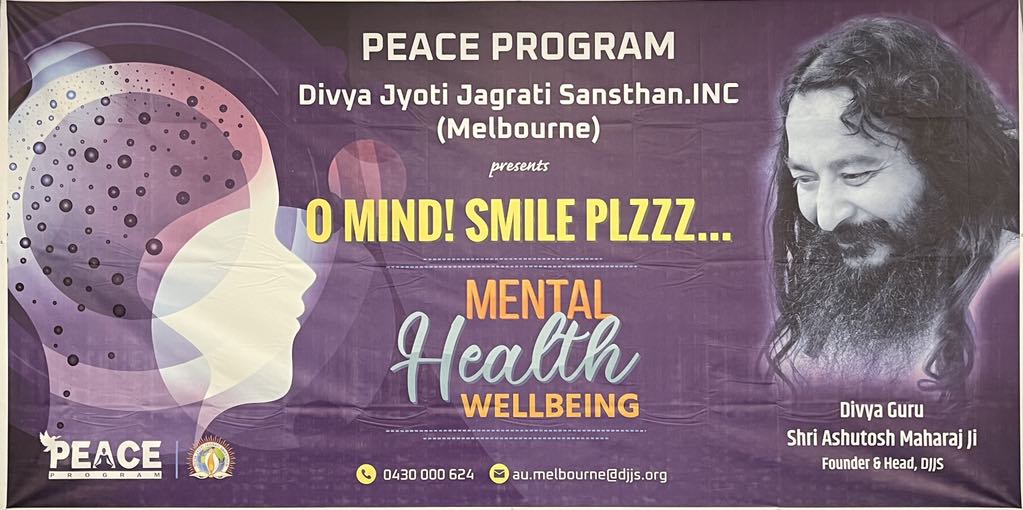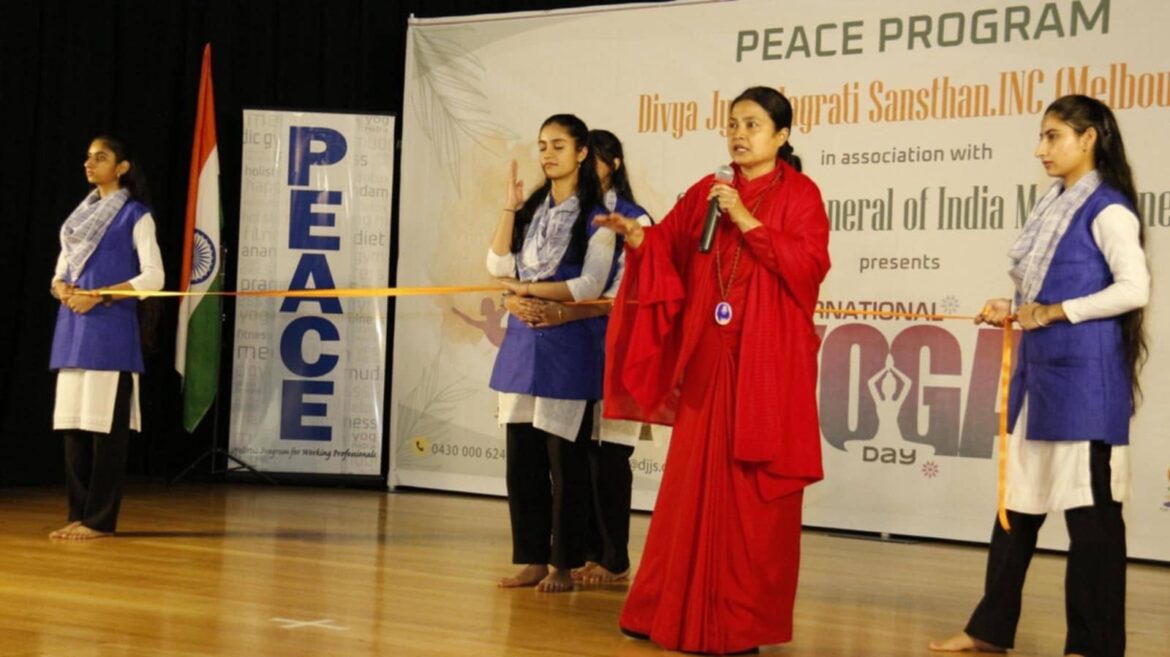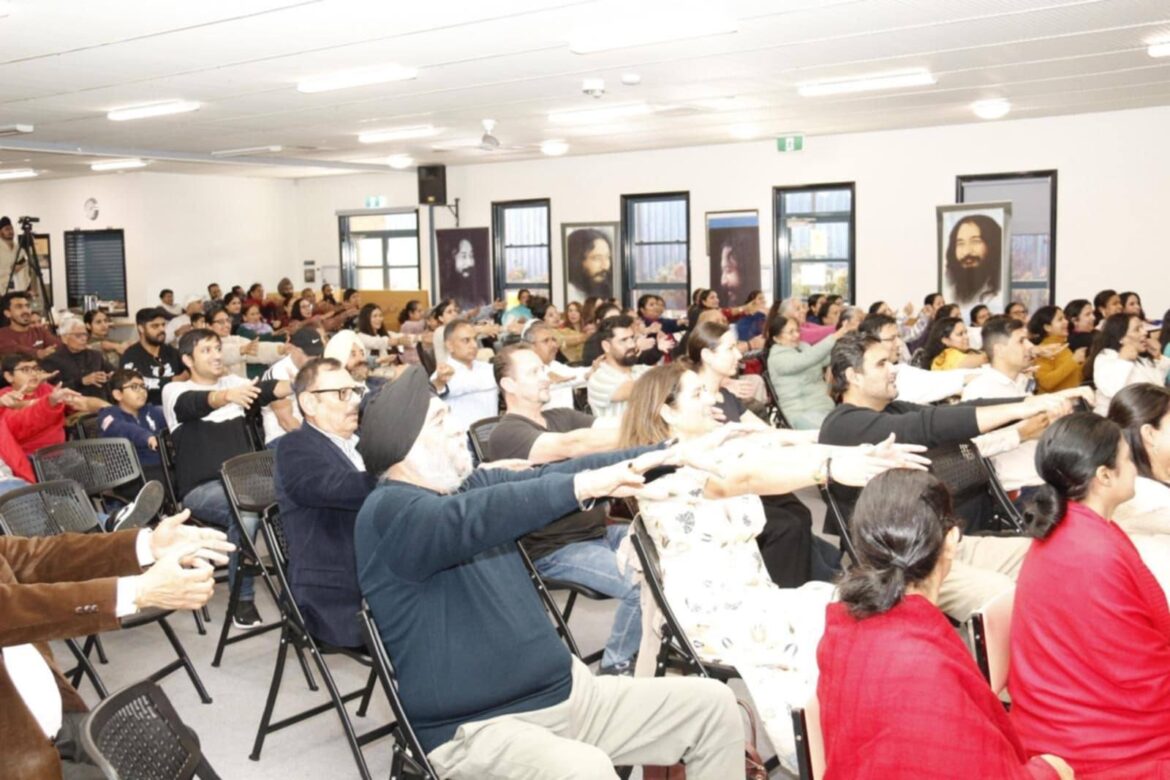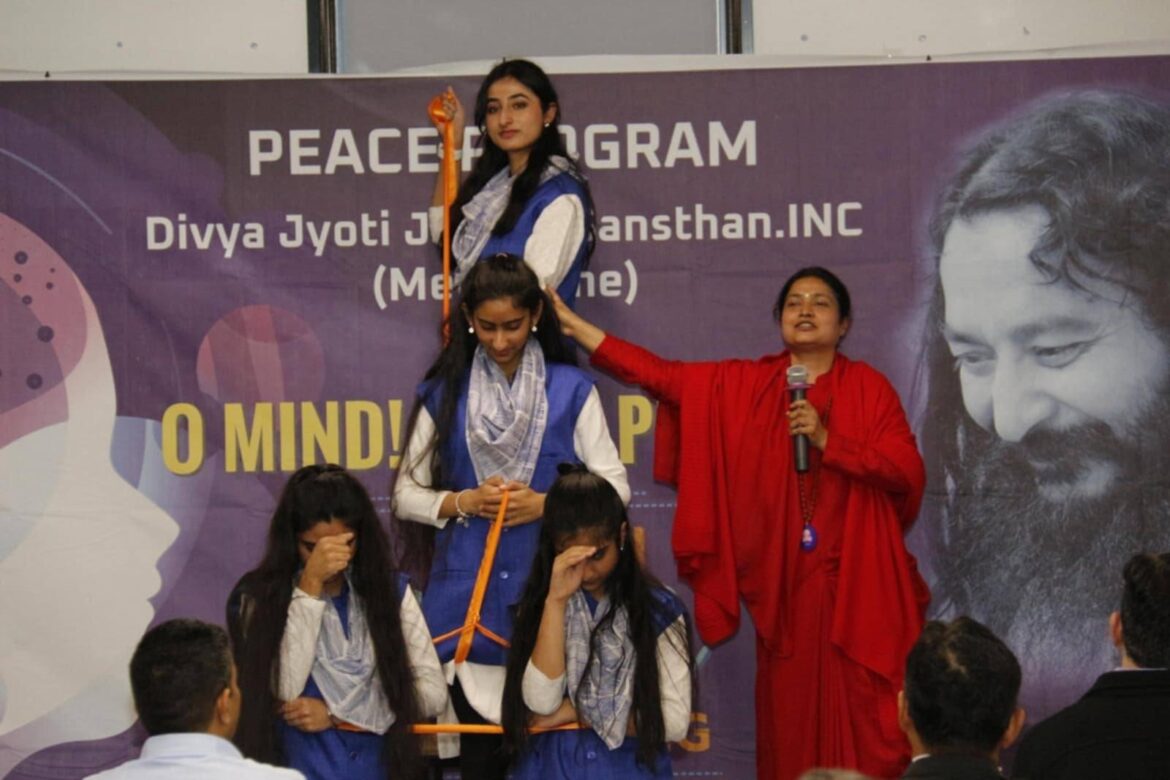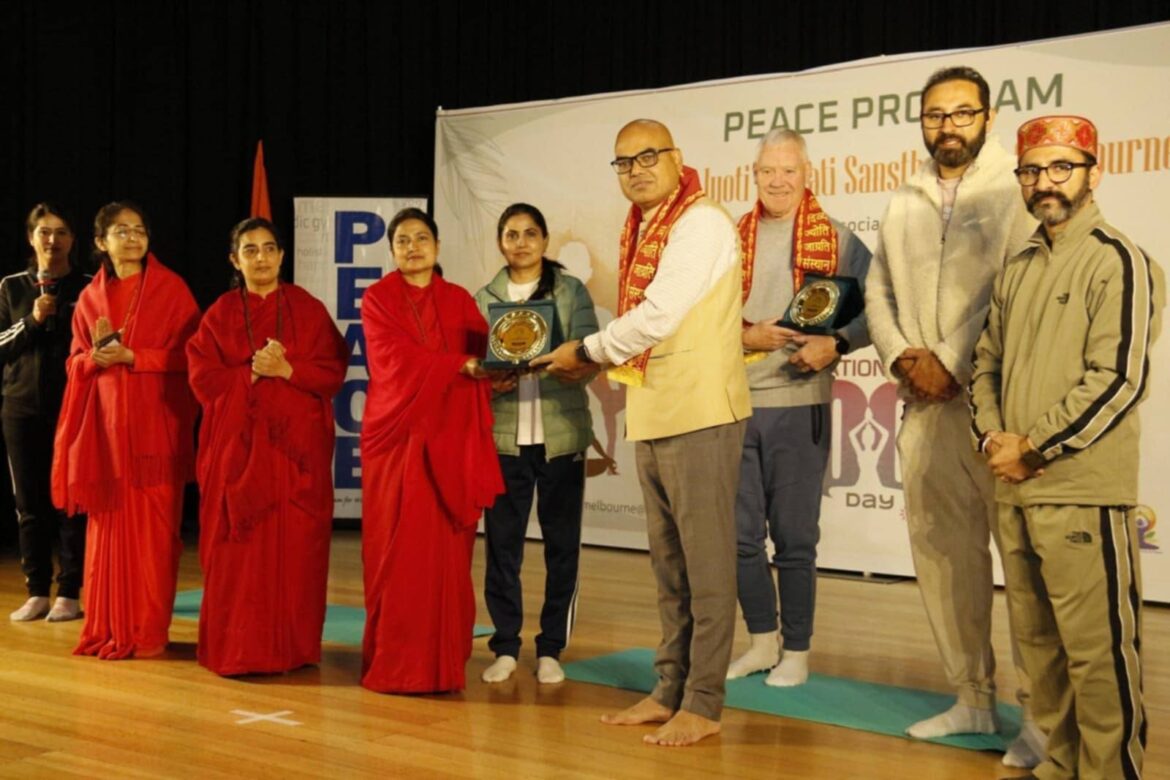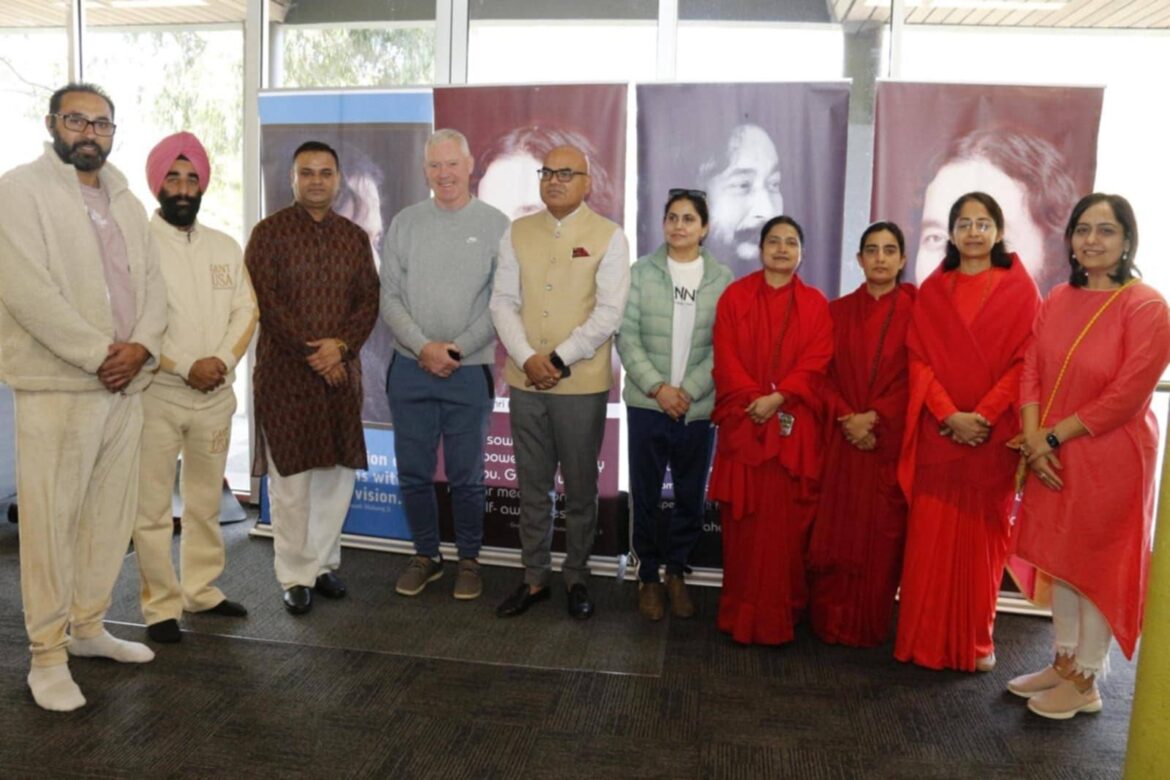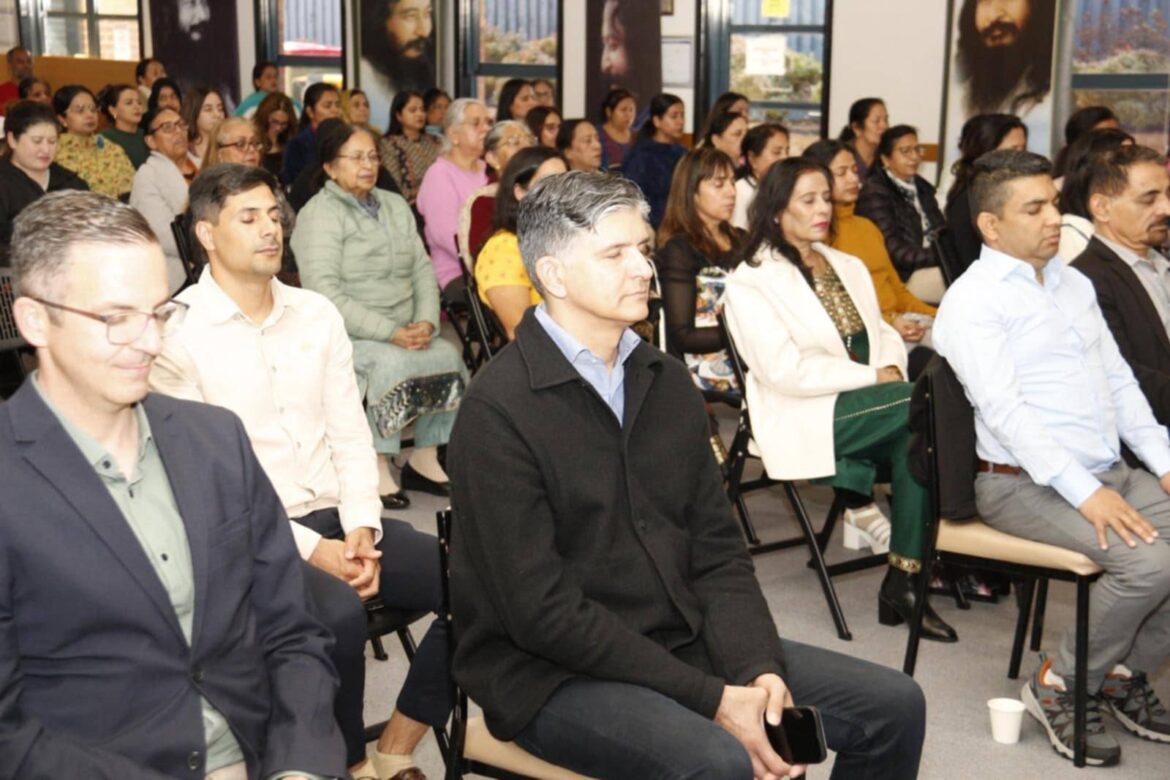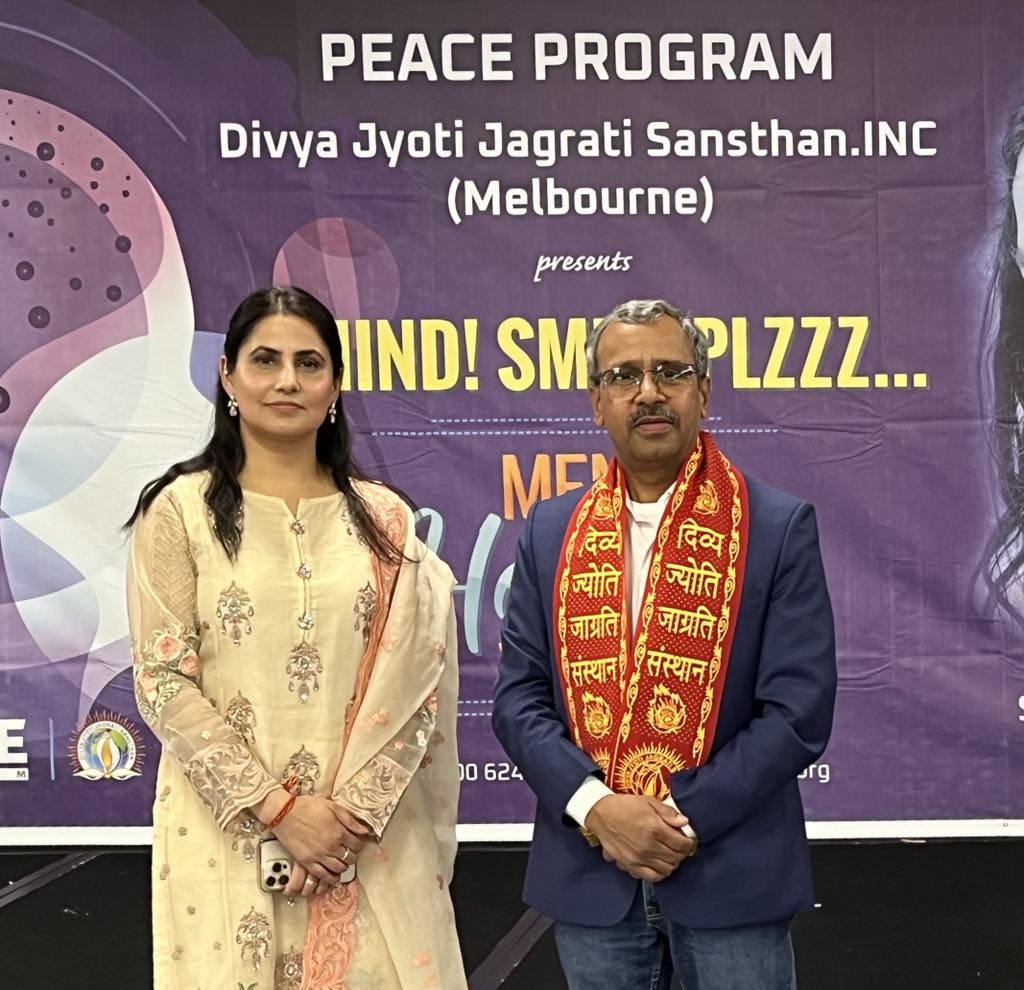Victoria, Australia – In a remarkable showcase of spirituality-driven wellness, Divya Jyoti Jagrati Sansthan (DJJS), under its corporate wellness initiative PEACE Program, held two significant events in Victoria in collaboration with prominent local and national organisations. These included a mental health seminar in Hallam and a grand International Yoga Day workshop in Melton, drawing the participation of over 370 community members, professionals, and dignitaries.
“O Mind! Smile Plzzz…”: Mental Health Awareness Takes Centre Stage in Hallam
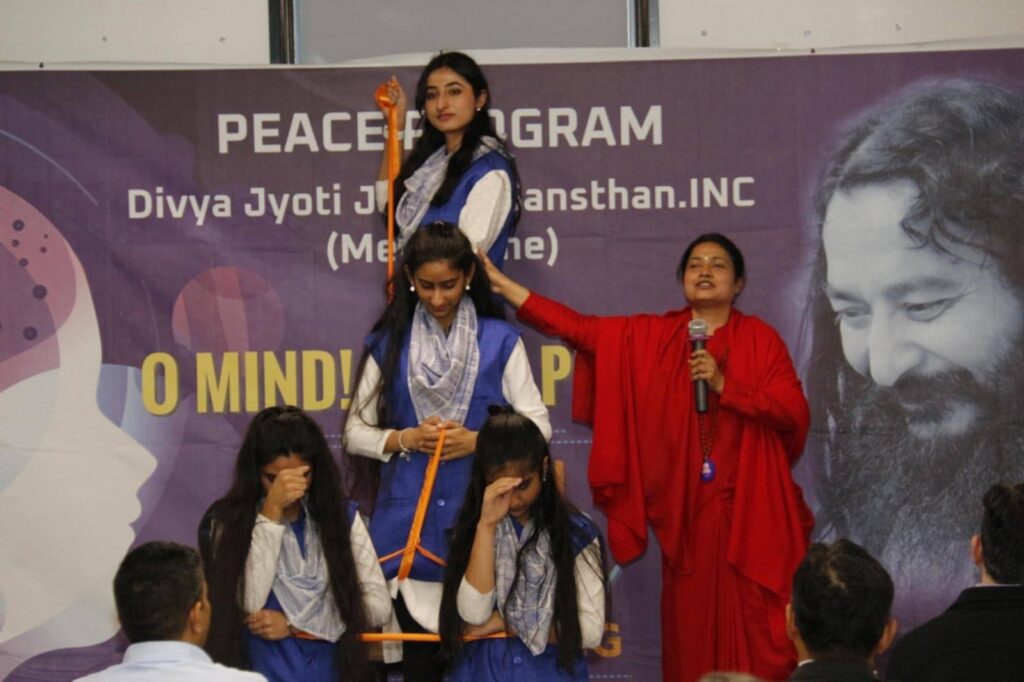
The first event, held on May 24 at Hallam Senior Citizens Centre and co-hosted with the Australian Multicultural Organisations Network (AMON), was a unique seminar titled “O Mind! Smile Plzzz…!” attended by more than 220 participants. It brought mental health issues among youth, professionals, and the elderly into focus, integrating insights from both science and spirituality.
The highlight of the event was the series of sessions led by saffron-clad women disciples (Sadhvis) of Indian spiritual leader Ashutosh Maharaj, founder of DJJS.
- Sadhvi Tapeshwari Bharti introduced the concept of Brahm Gyan through a session titled “Google Within: Meditation for Mental Health”, presenting meditation as a pathway to mental stillness and inner equilibrium.
- Sadhvi Parma Bharti emphasized physical well-being through yoga, breathing techniques, and Marma therapy, framing the mind as a subtle yet influential aspect of human existence.
- Sadhvi Shailasa Bharti took a nutrition-focused approach in her session “Ayurvedic Living”, highlighting alkaline diets, laughter routines, and Ayurvedic principles for balanced mental health.
The seminar also included the screening of the video “God Can Be Seen”, featuring testimonials from followers who have experienced personal transformation through Brahm Gyan meditation.
The seminar was attended by over 220 participants, including several dignitaries namely, Gary Maas (MP, Narre Warren South), Stefan Koomen (Mayor, Casey Council), Lynette Pereira (Councillor, Casey Council), Manoj Kumar (Chairman, AMON), Dr. Raju Adhikari (President, AMON), Ranjan Shrivastav ( Founder Member, AMON) ,Vinod Kumar Dahiya (Former Olympic Athlete & Director of Melbourne Wrestling Academy), Dr. Pragya Kant & Dr. Surya Kant (Accomplished Agriculture Scientists).
Yoga Day Celebration in Melton: A Fusion of Yogic Tradition and Modern Wellness
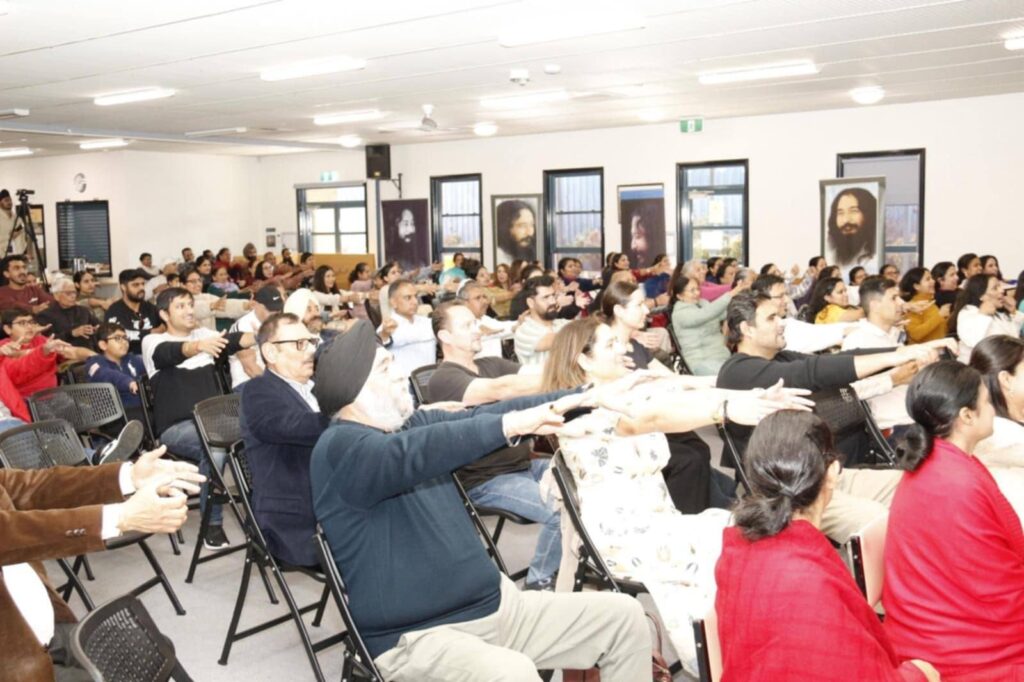
Just days later, DJJS conducted a grand International Yoga Day workshop at Melton Community Hall on May 25, in partnership with the Consulate General of India, Melbourne, drawing nearly 150 attendees. This event served as an all-encompassing introduction to Patanjali’s Ashtang Yog—the eightfold yogic path integrating body, mind, and soul.
- Sadhvi Parma Bharti opened the event with a lively physical yoga session, encouraging practical integration of yogic postures into daily life.
- Sadhvi Shailasa Bharti followed with a psychological yoga segment, demonstrating Pranayamas such as Kapalbhati, Anulom Vilom, and muscle relaxation techniques to manage stress.
- Sadhvi Tapeshwari Bharti concluded with an advanced metaphysical session on Yog Nidra and Dhyaan, deepening the understanding of Brahm Gyan and its place in spiritual transformation.
The event was graced by dignitaries such as Steve McGhie (MP, Melton), Dr. Sushil Kumar (Consul General, CGI Melbourne), and Mayor Pradeep Tiwari (Maribyrnong City). Dr. Kumar praised the DJJS team for preserving and promoting the rich heritage of Indian spirituality and yoga in Australia.
Sponsors and Community Support
Both events were strongly backed by a range of community organisations and sponsors, including Teesdale Family Medical Centre, Absolut Financial, Trinity Medical Group, Gurzora Homes, Commune Health Services, Urban Dream Real Estate, and Brilliant Migration Club. Cultural associations like Sahara Victorian Association, Vedic Global, Let’s Feed, and Aastha also offered their support, reflecting a strong sense of multicultural unity and wellness advocacy.
A Message of Holistic Healing and Unity
Through these impactful events, DJJS and the PEACE Program reaffirmed their commitment to community wellness—bridging ancient Indian wisdom with modern mental and physical health practices. As dignitaries and participants echoed, such initiatives not only nurture individual well-being but also strengthen the fabric of Australia’s multicultural and spiritually curious society.
News and pictures were supplied by Ranjan Shrivastav and Gurpreet Dhillon

